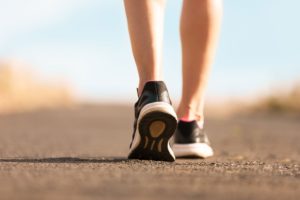In my personal experience as well as with working with other people Ritual practices are the most important components that support our human lives in order for us to have everything we need in order to cement/manifest into our lives what is most important to us. Ritual is more important and powerful than you may think!
Indigenous people’s have lived with rituals as the major cornerstone for how they have lived their lives for millennia, but ritual has seemed to have lost its place in modern culture. Indigenous people’s practiced a sleep cycle ritual, farming rituals, foraging rituals, medicinal and seasonal rituals to prevent sickness, and the list goes on. These rituals keep them connected to one another and the earth and vitally healthy.
So what rituals allow us maintain vibrant health, hearts, and spirits? It’s those nurturing rituals that have the most impact, rather than punishing ourselves with hard exercise and a fast paced life.
Here are my Top 5 Daily Rituals for Optimal Health!
1. Sleeping with the cycles of the Sun

Yes, I am starting with sleep! Solid sleep for at least 7-9 hours is essential for dynamic health. So let me explain.
We have something called a circadian rhythm where we are wired to sleep when the sun goes down and to wake when the sun rises. This circadian rhythm keeps our hormones balanced and our body systems working optimally. When we fall out of sync with the sun so do our body systems. Therefore, no matter how many hours of sleep you get, you may still be left feeling exhausted.
Did you know that more than one-third of American adults admit to not getting enough sleep, and that number is continually rising!
So what do you need to do to boost your energy? Develop a sleep ritual where you are asleep by 10pm at least 5 nights a week. As long as you’re sleeping through the night (which is a problem for many), and you honor this sleep ritual, you’ll find yourself springing out of bed when the sun comes up.
2. Let the sun hit your face for 10-20 minutes every morning within an hour of rising.

Our ancestors spent most of their waking hours outdoors, a lifestyle in stark contrast to modern society. Between working in an office, living in a home, no longer growing our food for survival, driving cars, etc… we spend more time in doors than ever. Not only does this cause seasonal affective disorder (depression, etc… in the darker months) but also a slue of physical symptoms can occur by not getting enough Vitamin D and Serotonin activity in the mornings.
When our eyes see the light in the morning it activates the brain to produce Serotonin, a neurotransmitter that contributes to well-being, happiness, appetite, motor function, cognitive function, and autonomic functions (things that happen automatically in the body without you thinking about it). It’s often referred to as the “happy chemical” and boosts mood. Serotonin makes Melatonin (known as the precursor) which is an essential component for solid sleep. So you can see how Serotonin also helps to regulate the body’s sleep-wake cycles and internal clock.
Fun Fact: 80% of Serotonin is produced in the gut where it regulates bowel function and movements! See, everything is connected to the gut! I digress….
If you can’t get in the sun in the mornings because of lifestyle or maybe the region in which you live I would highly recommend purchasing a light box with at least 10,000 LUX Units and sitting in front of it for 10-20 minutes per day preferably in the morning.
3. Breath work, aka Pranayama

Daily breath work allows us to move more into the parasympathetic nervous system, our “rest and digest” system. Our “rest and digest” self reflects dynamic health and staves off dis-ease of all forms. Modern life definitely encourages “fight or flight” activity, aka sympathetic nervous system activity. I suggest starting with the 4-7-8 breath every morning while sitting in the sun with eyes open. This involves inhaling through the nose for a count of four, holding for a count of seven, and exhaling through the nose for a count of 8 for 5 minutes or more.
Use this particular breath work exercise anytime you feel anxious, speedy, not present, can’t calm down, and especially before eating!
Breathing into the heart can reduce anxiety dramatically. Gentle yoga classes and breath work such as alternate nostril breathing practiced regularly can also be fantastic for moving the body out of a stress response and into the parasympathetic nervous system.
4. Meditation

Meditation is a practice that research has shown to improve many facets of the human being because it moves us into the “rest and digest” part of ourselves. Meditation improves the spiritual body all the way to the physical body. Most notably, the connection between the gut-brain axis actually shows that meditation helps to rebuild the tight junctions and villi/micro-villi in the small intestines. Pretty cool!
Whether we are mentally active, resting or asleep, the brain always has some level of electrical activity. That electrical activity is measured by EEG (electroencephalography) in studies monitoring the frequency and location of electrical brain wave activity in meditation.
Several studies indicate better relaxation and stress management by meditation techniques where you refrain from trying to control the content of the mind.
The biggest take away is that these methods are often described as non-directive, because practitioners do not actively pursue a particular experience or state of mind. They cultivate the ability to tolerate the spontaneous wandering of the mind without getting too much involved. Instead of concentrating on getting away from stressful thought and emotions, you simple let them pass in an effortless way.
Meditation is not, for example, gardening or having a physical yoga practice (asana), but those activities are rather meditative. A meditation practice is still (whether seated in a chair, on the ground, or reclining preferably in silence.
A meditation practice does not have to be 1 hour. JUST BEGIN A 5 MINUTE MEDITATION PRACTICE. EVERYONE HAS 5 MINUTES. There are many online FREE meditation guiding programs, and there are app’s available that are excellent for beginning a meditation practice. Some suggestions of app’s are Insight Timer, Calm, and Mindful.
5. Walking

Walking for 15-30 minutes is an excellent form of exercise that is safe, effective, and highly balancing on the body. This is not power walking, but rather a steady walk where you are breathing and mindful of your surroundings. Research has shown that benefits of walking include but are not limited to:
1. Exercise without raising your stress (cortisol) levels
2. Relieves stress
3. Builds strength
4. Improves mood
5. Gets you outdoors
6. Boosts energy
7. Boosts immune function
8. Helps balance blood sugar imbalances
9. Eases joint pain
10. Improves liver, heart, and gut health.
Begin integrating one or more of these rituals into your daily life and notice the benefits. No one can make you healthy, only you can one step at a time.
Always wishing you vibrant and abundant health!
I love this! These explanations are clear and inviting. I want to start the five minute breathing practice today, along with a non-power walk.
Time to take some slow-down moments during an otherwise busy and fast-placed life.
Thank you Maral!
Much love!
Wonderful! Thank you for your loving shares. I can’t wait to hear your experiences. Big love to you Holly!
Thank you for the reminders!
These are simple but not all in my daily plan as yet so I will now include them as rituals!
Thank you for the nudge!
Absolutely lovely!